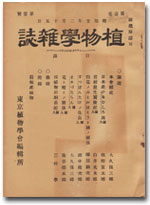All issues

Volume 82, Issue 969
Displaying 1-5 of 5 articles from this issue
- |<
- <
- 1
- >
- >|
-
Hiroyuki IRIE1969 Volume 82 Issue 969 Pages 97-101
Published: 1969
Released on J-STAGE: October 31, 2006
JOURNAL FREE ACCESSSeveral investigators have indicated that two kinds of radiation-induced chromosome breaks (rapidly and slowly rejoining breaks) can be distinguished on the basis of their average time of restitution. In order to obtain further insight as to whether the rapidly rejoining breaks are of ionic nature or not, the effects of EDTA on the rejoining of the X-ray-induced chromosome breaks were investigated with the root tips of Vicia faba. The results obtained showed that the pre-irradiation treatment with EDTA gave the significantly higher frequencies of both chromatid exchanges and chromatid breaks than those in the X-ray control, whereas the post-irradiation treatment with this chemical did not result in any increase in the frequency of aberration yield. These results indicate that EDTA affects on mainly the rejoining process between the rapidly rejoining breaks and thus they are of ionic nature.View full abstractDownload PDF (554K) -
Shu-Ting CHANG1969 Volume 82 Issue 969 Pages 102-109
Published: 1969
Released on J-STAGE: October 31, 2006
JOURNAL FREE ACCESSVolvariella volvacea is a tetrasporous fungus of the tropics and subtropics and belongs to the family Amanitaceae of the Basidiomycetes. It has two kinds of spores, one being the sexual basidiospore and the other the asexual chlamydospore. The spores were collected on a permeable cellophane membrane overlying the complete semisolid medium and incubated at 40°for 24-48hours and at 35°for 24hours for germination of basidiospores and chlamydospores, respectively. The uninuclear basidiospores and the multinuclear chlamydospores are observed and discussed. Non-septal uninucleate, binucleate, and multinucleate germ tubes and septal multinucleate as well as branched germ tubes are also described. Conventional mitotic figures and simple septa as well as suspected dolipore septa are observed in the germ tubes. Special attention was given to the nuclear translocation by migration through the septa. The primary results indicate that this mushroom may be a homothallic fungus.View full abstractDownload PDF (1410K) -
Changes in the IAA Content and the Activity of IAA Destruction in the Decapitated Epicotyl of Etiolated Stizolobium and Vicia SeedlingsYukio MOROHASHI, Atsushi KOMAMINE, Masami SHIMOKORIYAMA1969 Volume 82 Issue 969 Pages 110-120
Published: 1969
Released on J-STAGE: October 31, 2006
JOURNAL FREE ACCESS1. After cutting, IAA content in the 0-5mm region below the cut surface of etiolated Stizolobium epicotyl increased considerably and IAA destructive activity in the cut region (0-2mm) was markedly induced under the dark conditions. Thus, the changes in the IAA level in the cut region of Stizolobium epicotyl could not be explained with those in the level of IAA destroying activity.
2. In Vicia epicotyl, IAA content of the region (0-3mm) increased markedly in a day after cutting, but declined sharply thereafter. In IAA treated epicotyl, a remarkably high IAA level in the region, caused by IAA application, dropped rapidly in three days after IAA treatment. However, the IAA level was maintained at rather a high level thereafter, as compared with that in the non-treated epicotyl. IAA destructive activity was induced in the cut region (0-2mm) after cutting and much increased afterwards. IAA treatment seemed to retard the induction of the activity. High IAA level in the cut region appeared to be, at least partly, attributed to the low rate of IAA destruction.View full abstractDownload PDF (1085K) -
Chromosome of the Genus Hymenophyllum and Mecodium in Japan.Seizi TATUNO, Masahiro TAKEI1969 Volume 82 Issue 969 Pages 121-129
Published: 1969
Released on J-STAGE: October 31, 2006
JOURNAL FREE ACCESSKaryological studies were made on Japanese ferns of 2 genera, 4 species belonging to the Hymenophyllaceae. Chromosome numbers of the 4 species are as follows; Hymenopyllum barbatum 2n=42, Mecodium oligosorum 2n=42, M. wrightii 2n=84 and M. polyanthos 2n=56. The chromosome complements of the species in Hymenophyllaceae studied by the authors can be divided from the morphological view point into 6(A-F) types and further can be divided into 2 groups in each type except for F type. Therefore, the primary basic number of the genus Hymenophyllum and Mecodium can be considered to be x=11. After polyploidizing, one part of B type elements in genus Hymenophyllum and one part of C type elements in genus Mecodium might be subjected to elimination which leads to the present chromosome numbers.View full abstractDownload PDF (931K) -
Akafumi TEZUKA, Yukio YAMAMOTO1969 Volume 82 Issue 969 Pages 130-133
Published: 1969
Released on J-STAGE: October 31, 2006
JOURNAL FREE ACCESSDownload PDF (273K)
- |<
- <
- 1
- >
- >|